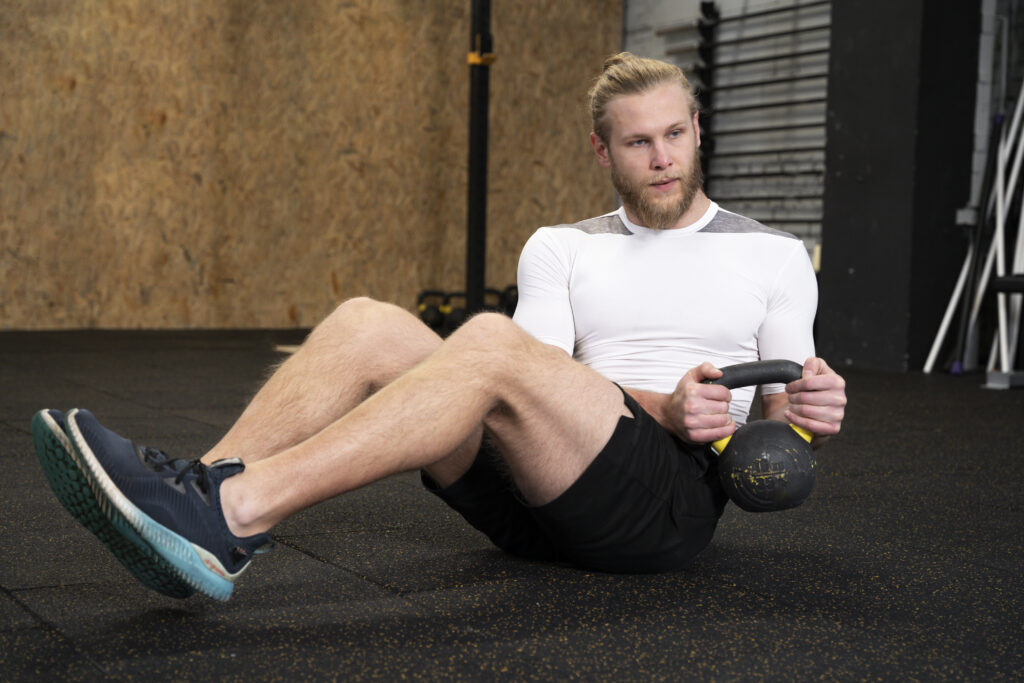Research-Based Plan for Core Definition (12–16 Weeks)
Getting strong and defined abs involves a combination of diet, exercise, and understanding your genetics. Below is a well-rounded plan supported by research to help guide you.
1. Diet: 70–80% of the Equation
Diet plays the largest role in revealing a defined core. Body fat percentage must be reduced to 10–14% for men and 18–22% for women in order to see significant abdominal definition.
Key Tips:
- Caloric Deficit: Aim for a daily deficit of 500–750 calories to lose 0.5–1 lb of fat per week.
- Source: Hall et al., 2016, The Lancet
- Macronutrient Distribution:
- Protein: 1.6–2.2 g/kg body weight (for muscle retention).
- Carbs: Focus on complex carbs like sweet potatoes and quinoa.
- Fats: 20–30% of daily intake from healthy fats like avocado and olive oil.
- Source: Phillips et al., 2018, Sports Medicine
- Meal Timing: Eat protein-rich meals post-workout to enhance muscle protein synthesis.
- Source: Schoenfeld et al., 2013, Journal of the International Society of Sports Nutrition
- Hydration: Drink at least 3 liters of water daily to aid metabolism, especially first thing in the a.m. – before any coffee!
2. Core-Specific Workouts
Focus on a mix of static, dynamic, and functional core exercises to build strength and overall definition.
Weekly Core Routine (3x Per Week):
- Plank (Static Hold):
- Regular, side, and weighted planks (hold 30–60 seconds, 3 sets).
- Source: Snarr & Esco, 2014, Journal of Strength and Conditioning Research
- Hanging Leg/Knee Raise (Dynamic):
- Perform 3 sets of 12–15 reps.
- Source: EMG Studies on core activation, Konrad et al., 2021.
- Russian Twist (Rotational):
- Use a medicine ball or dumbbell, 3 sets of 20 reps (10 per side).
- Dead Bug (Functional):
- Improves core stability, 3 sets of 12–15 reps.
3. Strength Training and Cardio for Fat Loss
- Strength Training:
- Incorporate compound lifts (deadlifts, squats, and rows) 3x per week to build overall muscle, increasing basal metabolic rate.
- Source: Westcott, 2012, Current Sports Medicine Reports
- High-Intensity Interval Training (HIIT):
- Perform HIIT 2–3 times weekly (e.g., 20 seconds all-out, 40 seconds rest, 15 rounds).
- HIIT burns fat while preserving muscle mass.
- Source: Gibala et al., 2006, The Journal of Physiology
4. Genetics and Realistic Expectations
- Genetics Role:
- Genetics influence the size, shape, and symmetry of your abdominal muscles.
- Some people may require lower body fat levels for the same level of definition.
- Source: Bouchard et al., 1999, Physiology & Behavior
5. Tracking Progress
- Body Fat Monitoring: Use calipers or a hydrostatic weighing to track fat loss.
- Photo Logs: Take weekly progress photos to visually track changes.
- RPE (Rate of Perceived Exertion): Use to ensure workout intensity aligns with goals.
Example Weekly Schedule (For 12 Weeks)
| Day | Activity | Focus |
|---|---|---|
| Monday | Strength Training + Core Work | Compound lifts + static core work |
| Tuesday | HIIT + Active Recovery | Fat burning |
| Wednesday | Core-Specific Workout | Dynamic core |
| Thursday | Strength Training | Muscle building |
| Friday | Core + Cardio | Rotational work |
| Saturday | HIIT | Fat burning |
| Sunday | Rest/Recovery | Recovery |
References
- Hall KD et al. (2016). Energy balance and body composition changes with dieting. The Lancet.
- Phillips SM et al. (2018). Protein requirements for athletes. Sports Medicine.
- Schoenfeld BJ et al. (2013). Meal timing and protein synthesis. JISSN.
- Snarr RL, Esco MR. (2014). Electromyographic analysis of plank variations. JSCR.
- Konrad P et al. (2021). Muscle activation during core exercises. BMC Sports Science.
- Gibala MJ et al. (2006). Benefits of high-intensity interval training. The Journal of Physiology.
- Westcott WL. (2012). Strength training for fat loss. Current Sports Medicine Reports.
- Bouchard C et al. (1999). Genetics and body composition. Physiology & Behavior.
This 12–16 week plan integrates diet, exercise, and scientific insights to help you achieve a more defined core. Stick with it, track progress on your Jefit app, and adjust as needed!
Jefit Core Focused Programs
The award winning Jefit app published new programs on a weekly basis. Here are a few of our core focused programs, one of which, may have your name on it.
- 4-Week CORE Program (Intermediate level)
- Core Challenge 50 (Beginner level)
- Core Challenge 100 (Intermediate level)
- Strong Abs in 6-Weeks (Advanced level)
- Bikini Season Abs (Advanced level)
- Abs and Cardio: No Equipment (Beginner level)
Stay Strong Together
If you’re serious about nutrition, building muscle and reaching your fitness goals in 2025, then the Jefit app is the perfect tool to help get you there! With over 20 million downloads and more than 12 million bodybuilders using the app to track their workouts, Jefit is the ultimate strength training companion. Rated as the 2024 Best App and featured by top publications like Men’s Health, PC Magazine, and USA TODAY. Jefit boasts 42,000+ five-star ratings for its user-friendly design and comprehensive features. Whether you’re focused on protein intake, building strength, or tracking your progress, Jefit has everything you need to succeed. Download Jefit today and join millions of fitness enthusiasts transforming their bodies!
- 4 Must-Have Exercises Backed by Science for a Full-Body Workout - April 14, 2025
- Best Warm-Up for Strength Training, Backed by Science - April 11, 2025
- 5 Proven Tips to Unlock Your Full Potential in the Gym - April 9, 2025
